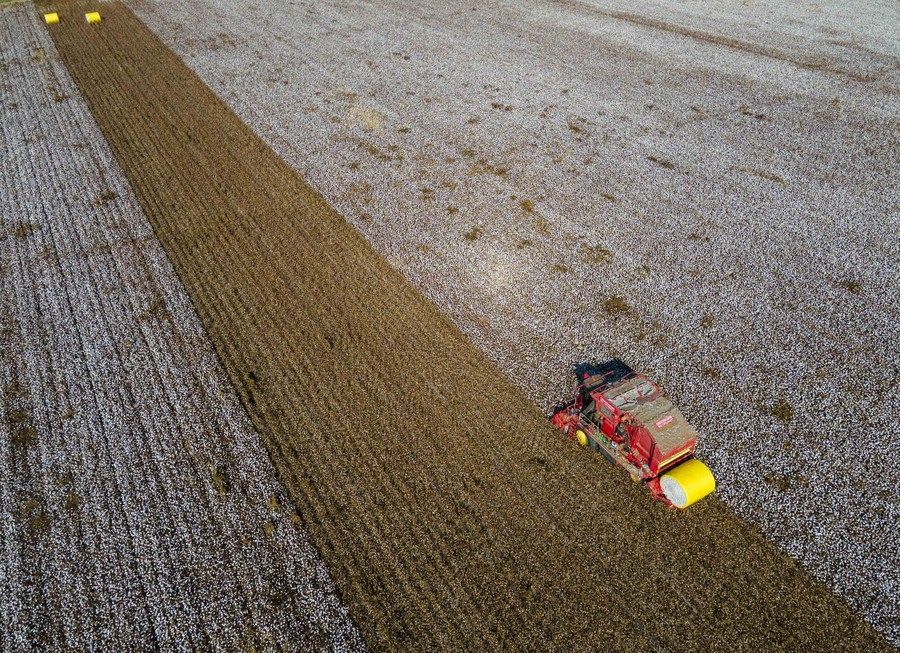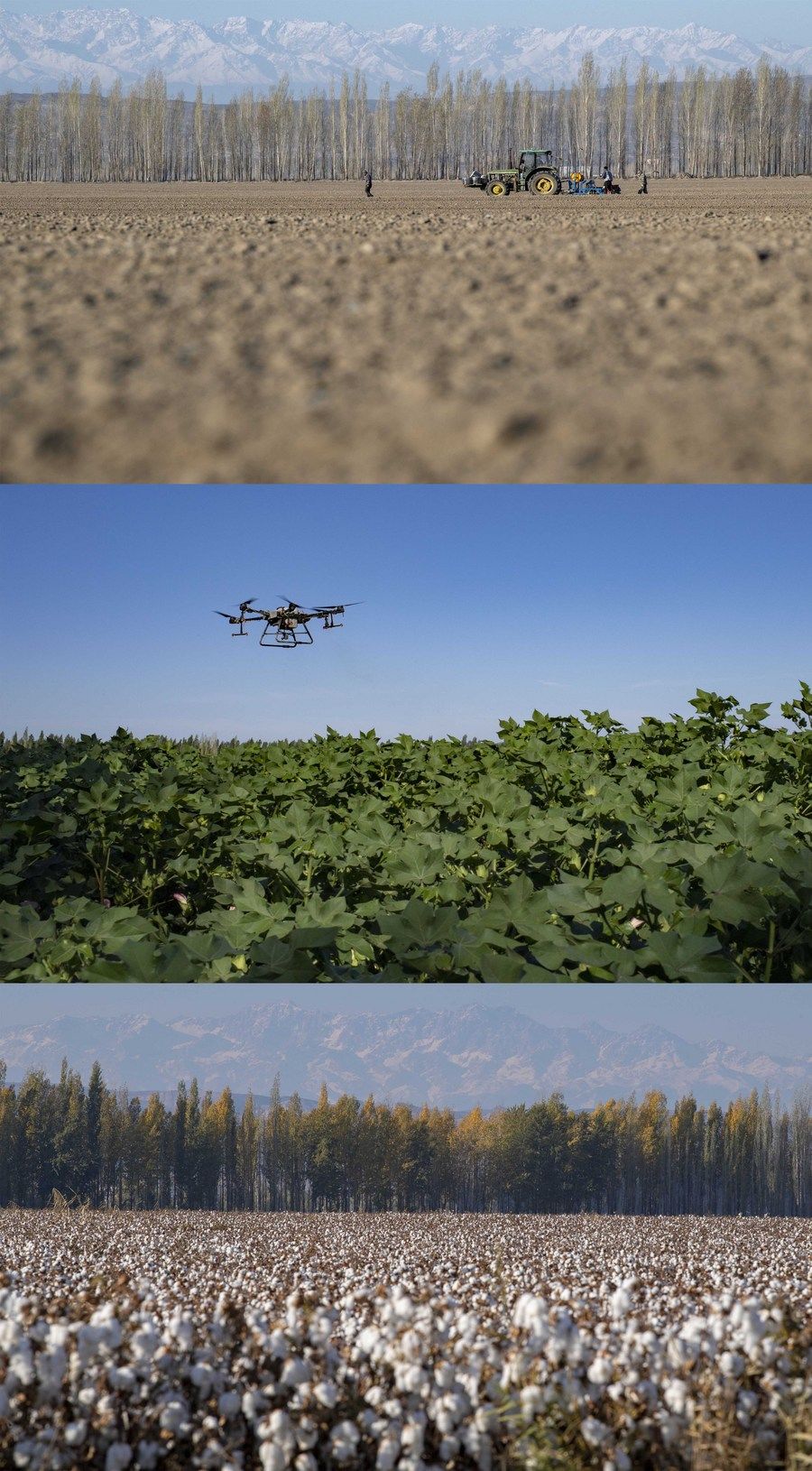xinjiHarvesting the truth: Why Xinjiangs cotton fields offer more than warmth
-- The cotton harvest season in Xinjiang, China's largest cotton-producing region, will last until mid-November this year, with the output expected to reach 5.2 million tonnes.
-- The region has contributed nearly 90 percent of China's cotton production capacity and about 20 percent of the global cotton production.
-- This year, more than 70 percent of the 2.48 million hectares of cotton fields in Xinjiang are harvested mechanically.
by Xinhua writers Xuan Liqi, Li Zhihao, and Hu Huhu
URUMQI, Oct. 31 (Xinhua) -- In four days, Lu Gaolin, a cotton farmer in northwest China's Xinjiang Uygur Autonomous Region, completely finished harvesting his 64-hectare cotton field thanks to a gigantic green machine.
The cotton picker is way more efficient than manual labor. "It used to take seven or eight workers over two months to complete the job of manually picking cotton," he said.
The cotton harvest season in Xinjiang, China's largest cotton-producing region, will last until mid-November this year, with the output expected to reach 5.2 million tonnes. The region has contributed nearly 90 percent of China's cotton production capacity and about 20 percent of the global cotton production.
RUMOR MILL KEEPS RUNNING
Resistant to drought and sandstorms, cotton is an indispensable crop for the farmers' livelihood in Xinjiang. In their eyes, the rumors about "forced labor" in Xinjiang are extremely absurd.
Arkin Rehim, a cotton farmer in the region's Yuli County, has a great sense of fondness for cotton because cotton helps his family live the happy life they dreamed of.
"We will never allow anyone to smear Xinjiang or defile the cotton we have planted," he said. "I have confidence in Xinjiang cotton and will never give up planting it because of rumors."
For Xinjiang farmers, cotton-picking used to be an exhausting job. "We even worked until one or two o'clock each night during the harvest season," Lu said.

文章插图
Aerial photo taken on Oct. 24, 2021 shows a cotton picker working in Lu Gaolin's cotton field in Sandaogou Village of Shawan City, northwest China's Xinjiang Uygur Autonomous Region. (Xinhua/Hu Huhu)
However, since manual cotton-picking became a thing of the past as early as 2014 in Shawan City, Lu's hometown, farmers there have already been free from the arduous physical labor. This year, more than 70 percent of the 2.48 million hectares of cotton fields in Xinjiang are harvested mechanically.
Presently, the whole process of planting and harvesting has been mechanized on more than 90 percent of cotton fields in northern Xinjiang. The mechanization rate of cotton picking has reached 40 percent and is still rising in the region's southern part.
Workers of all ethnic groups in Xinjiang always choose jobs of their own volition, and there is no coercion of any kind, said a white paper issued by the State Council Information Office.
【xinjiHarvesting the truth: Why Xinjiangs cotton fields offer more than warmth】GROWING PROSPERITY
Mijit Bakri, a cotton farmer in Bachu County, could barely feed his family of six in the past 20 years with a 2-hectare cotton field. Now he and his family have bid farewell to poverty.
Like his neighboring families, he chose to lease his field to a large-scale agricultural enterprise. They apply mechanized planting and harvesting to the families' fields, covering tens of thousands of hectares.

文章插图
Combo photo taken in Lu Gaolin's cotton field shows cotton seed sowing underway on April 15, 2021 (top), a drone spraying pesticide (middle) on July 15, 2021 and cotton to be harvested on Oct. 28, 2021 in Shawan City, northwest China's Xinjiang Uygur Autonomous Region. (Xinhua/Hu Huhu)
推荐阅读
- 事情|老外问“Are you there?”,真的不是问“你在那吗”, 而是问...
- The|斑马博士捷报|曼彻斯特大学The University of Manchester MSc Finance录取!
- 大学排名|THE世界大学排名出炉,清北并列亚洲第一,南方科大攻入国内前十
- the|【专升本—英语】 2022年专升本考试英语词汇与语法结构练习(8)
- jury|英语口语900句第141期: 俚语“The jury is still out”是什么意思?
- 教师|英语习语:on the nose 不仅只有“在鼻子上”的意思,它还有其他寓意
- there|Here you go不是“往这走”?There you go也不是“往那走”?
- 温州|和玉玲一起学英语
- |非驴非马用英语怎么表达?真不是 neither donkey nor horse
- what|英语口语900句第134期: 俚语“Drop the ball”是什么意思?













